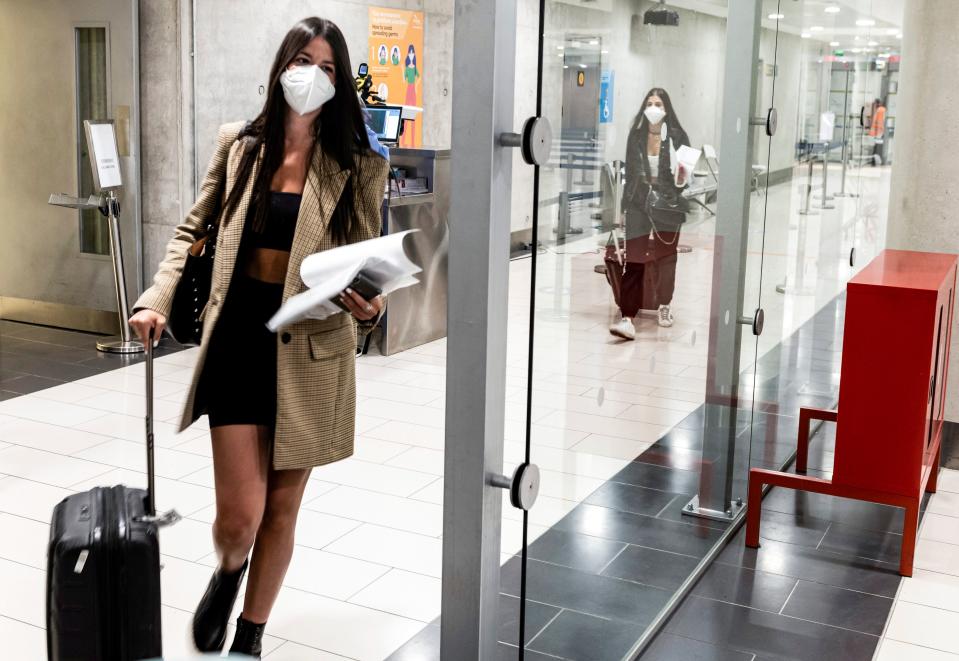Coronavirus: WHO says asymptomatic patients ‘rarely’ spread the infection - what is the evidence?
People with the coronavirus who show no symptoms “very rarely” spread the infection, according to the World Health Organization (WHO).
Speaking at a media briefing, Dr Maria Van Kerkhove said that based on the data available, “it still seems to be rare that an asymptomatic person actually transmits onward to a secondary individual”.
As officials work to ease restrictions and focus on contact tracing, the WHO’s COVID-19 technical lead stressed attention should shift to symptomatic cases.
Another expert added Dr Van Kerkhove’s claim “may well be true”, however, evidence also suggests somebody can feel perfectly well and transmit the coronavirus.
One scientist expressed his surprise at the statement, adding the “best scientific studies to date suggest that up to half of cases became infected from asymptomatic or pre-symptomatic people”.
Early research suggests the coronavirus is mild in four out of five cases, however, it can trigger a respiratory disease called COVID-19.

How many patients are asymptomatic?
The number of asymptomatic patients, and whether they spread the infection, has been up for debate since the start of the coronavirus outbreak.
It mainly spreads face-to-face via infected droplets expelled in a cough or sneeze.
If an infected patient is asymptomatic – and therefore not coughing or sneezing – they would theoretically be expected to transmit less of the virus.
Even an occasional cough or sneeze, however, could contaminate their hands. The individual may then touch a surface, where the coronavirus can linger for up to three days.
Concerns have also been raised the infection may spread if people speak loudly or breathe heavily while exercising, with outbreaks emerging in choir practices and gyms.
How many test positive for the coronavirus but have no symptoms is also unclear, let alone whether they pass the infection on.
On 3 March, the WHO’s director-general Dr Tedros Adhanom Ghebreyesus said: “Evidence from China is only 1% of reported cases do not have symptoms and most of those cases develop symptoms within two days”.
Scientists from the University of Hong Kong later claimed 12.1% of patients do not develop a fever.
When it comes to the transmission of the coronavirus, scientists from Macquirie University Hospital in Australia looked at an outbreak on a cruise ship.
Less than four in five (18%) developed symptoms, but that did not stop the infection taking hold in 128 passengers and staff.
Do asymptomatic patients spread the coronavirus?
When asked about the asymptomatic transmission of the coronavirus, Dr Van Kerkhove said many of these cases are identified via contact tracing.
“You pick up people who may have no symptoms or even mild symptoms”, she said.
Dr Van Kerkhove said that after looking into whether cases are “true asymptomatic”, most actually have “really mild disease”.
Reports from countries doing “very detailed contact tracing” are “not finding secondary transmission” from asymptomatic cases.
“It’s very rare,” she added.
Dr Van Kerkhove therefore called for officials to follow symptomatic cases – those with the tell-tale fever, cough and loss of taste or smell.
“If we actually followed all of the symptomatic cases, isolated those cases, followed the contacts and quarantined those contacts, we would drastically reduce [the outbreak]”, she said.
Speaking off the back of the press briefing, Professor Babak Javid, from Cambridge University Hospitals, said: “Dr Van Kerkhove makes the important distinction between true asymptomatics (never develop symptoms), pre-symptomatics (don’t have symptoms at the time of testing positive for [the coronavirus] but later develop symptoms), and pauci-symptomatics (have atypical or very mild symptoms).
“She describes that unpublished data suggest asymptomatics do not transmit infection. This may well be true.”
Contact tracing in Taiwan and Germany supports this.
“However, studies have found that pauci-symptomatic transmission can occur”, said Professor Javid.
He referenced a German study that found the infection tended to spread before, or on, the day symptoms emerged.
“Without having access to the data Dr Van Kerkhove refers to, it is difficult to make any other assessment,” said Prof Javid.
“In the meantime, other data available, from studies in several continents confirming that pre-symptomatic transmission does occur would suggest that being well does not necessarily mean one cannot transmit [the coronavirus].
“However, the important point is made that some even very mild symptoms that are not ‘typical’ of COVID may still represent someone who can be contagious.
“This has important implications for the track, trace, isolate measures being instituted in many countries.”
With the coronavirus only being identified at the end of 2019, the symptoms it is known to cause are relatively muddled.
The WHO links the infection to everything from skin rashes and pink eye to diarrhoea and fatigue.
Dermatologist Dr Veronique Bataille, from The Medical Chambers, previously told Yahoo UK: “I would, as a medic, recommend anyone who has anything during this current climate like a rash or extreme fatigue or diarrhoea that is unusual for them to say, ‘uh oh I think I’m a carrier’.
“It’s better to be overcautious and not infect other people.”
In response to Dr Van Kerkhove’s comment, Professor Liam Smeeth, from the London School of Hygiene and Tropical Medicine, said he was “quite surprised” to hear it.
“It goes against my impressions from the science so far that suggest asymptomatic and pre-symptomatic people are an important source of infection to others,” he said.
“There remains scientific uncertainty, but asymptomatic infection could be around 30% to 50% of cases.
“The best scientific studies to date suggest that up to half of cases became infected from asymptomatic or pre-symptomatic people”.
Professor Keith Neal, from the University of Nottingham, added the rate of asymptomatic transmission is “unclear but symptomatic people are responsible for most of the new infections”.
“This reinforces the importance of any person who has any of the symptoms of COVID-19 arranges a test for themselves as soon as possible and isolating until they get their test result,” he said.
“Everyone has a role to play in stopping COVID-19.”

What is the coronavirus?
The coronavirus is one of seven strains of a virus class that are known to infect humans.
Others cause everything from the common cold to severe acute respiratory syndrome (Sars), which killed 774 people during its 2002/3 outbreak.
Since the coronavirus outbreak was identified at the end of 2019, more than 7.1 million cases have been confirmed worldwide, according to Johns Hopkins University.
Of these cases, over 3.3 million are known to have recovered.
Globally, the death toll has exceeded 406,800.
Although the coronavirus mainly spreads via coughs and sneezes, there is also evidence it can be transmitted in faeces.
The coronavirus has no “set” treatment, with most patients naturally fighting off the infection.
Those requiring hospitalisation are given “supportive care”, like ventilation, while their immune system gets to work.
Officials urge people ward off infection by washing their hands regularly and maintaining social distancing.
Coronavirus: what happened today
Click here to sign up to the latest news, advice and information with our daily Catch-up newsletter
Read more about COVID-19
How to get a coronavirus test if you have symptoms
How easing of lockdown rules affects you
In pictures: How UK school classrooms could look in new normal
How public transport could look after lockdown
How our public spaces will change in the future
Help and advice
Read the full list of official FAQs here
10 tips from the NHS to help deal with anxiety
What to do if you think you have symptoms
How to get help if you've been furloughed



